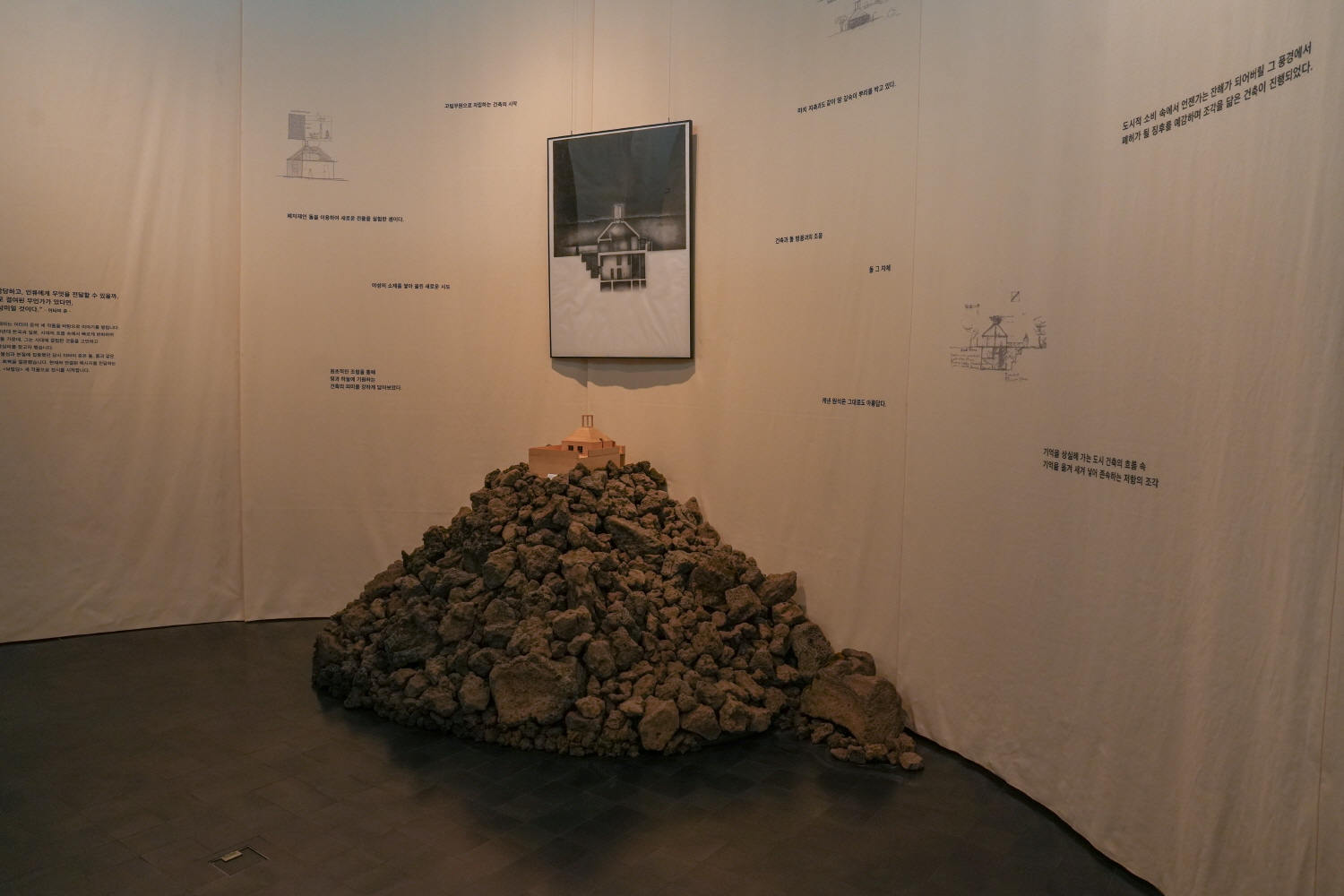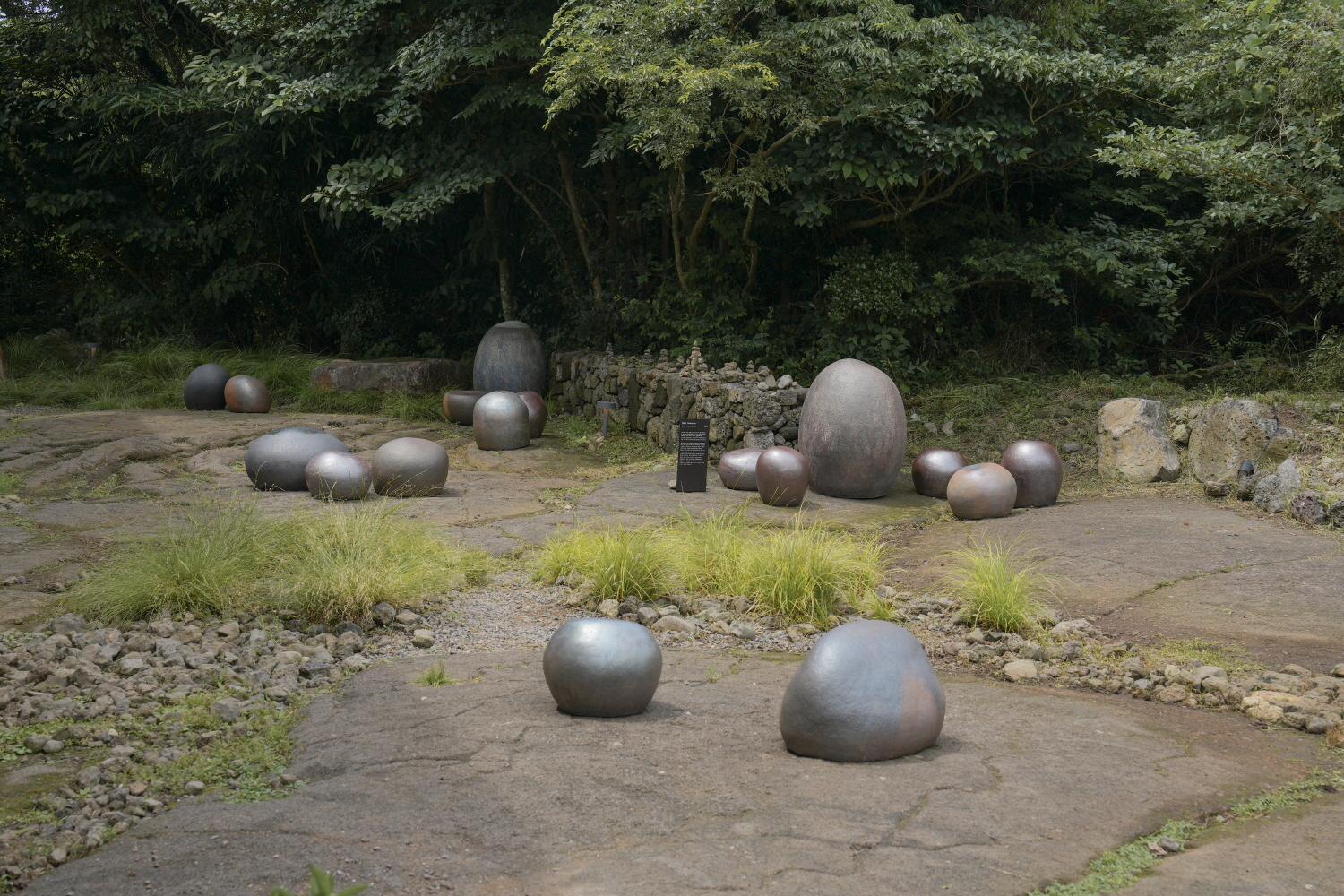SPACE Aug 2024 (No. 681)

Exhibition view of ‘Unfolding : Itami Jun’ / Images courtesy of ITAMI JUN Museum

Installation view of Badang-bat / Images courtesy of ITAMI JUN Museum
On June 26, the ITAMI JUN Museum held its second special exhibition since opening, ‘Voyage to the Origin (Artists with Warm Hands : Keeping the Warmth)’. ‘Artists with warm hands’ is a phrase written by Itami Jun in his book of essays, The Sound of Stones and Wind, in which he introduces artists with whom he has engaged closely and who share his outlook. While the inaugural exhibition ‘ITAMI JUN: Architect of the Wind’ celebrated Itami Jun’s life and work by bringing together his works from four decades, this exhibition views Itami Jun through the eyes of six contemporary artists (teams), namely Ban Shigeru, Bahk Seonghi, Han Wonsuk, Kang Seungchul, Cho Soyeon, and Tacit Group.
Itami Jun, who has always been concerned with what is lacking in our times, sought to bring ‘human warmth’ and ‘wildness (nature)’ into contemporary architecture, which has lost the balance between man and nature. And even today, the consolidation of an anthropocentric world is giving rise to numerous problems that threaten the survival of living beings – including human beings – such as the climate crisis, the treatment of refugees, and the extinction of species. The exhibition is divided into two parts, ‘Unfolding : Itami Jun’ and ‘Keeping Alive : Artists’, linking Itami Jun’s awareness of the issues with that of contemporary artists, and discussing the recovery of balance that is necessary in our time.
‘Unfolding : Itami Jun’ introduces works by Itami Jun that are the cornerstones of the exhibition’s theme: Onyang Folk Museum (currently Gujeong Art Center, 1982), Carved Tower (1988), and M Building (1992). Onyang Folk Museum is a work that captures the primordial beauty and strength of the soil. Impressed by the folk houses built in the countryside of Korea in the 1970s, Itami Jun built buildings that could stand on their own in the harsh environment of nature by pressing red clay into moulds and drying it in the sun to create unglazed bricks. Meanwhile, the Carved Tower in Seoul’s Bangae-dong residential area used stone, a generally wasted resource. He saw a wild beauty in the roughness of the stone that is chipped away in the process of producing standardised materials. The M Building also reflects his concern about what can be conveyed in the urban space of Tokyo, where human warmth is lacking. Itami Jun’s concerns and questions about the era are reflected in the primordial materials and forms of the three works. The architectural models and rough sketches on display convey them intuitively.
‘Keeping Alive : Artists’ showcases the works of artists that emerged from and branched out from Itami Jun’s perspective on nature and man, such as Water, Wind, Stone Art Museums (2006) and PODO Hotel (2001). As you enter the exhibition, guided by the sound of dripping water, you are confronted with hanging logs that have been charred to a blackened appearance. The burnt log, which Bahk Seonghi uses as the subject of his work, prompted the artist to reflect on the relationship between nature and man after witnessing a mountain succumb to a forest fire. In the work he presents here, Origin 20240508 (2024), he invites the audience to reflect on the relationship between nature, man and life by adding a metal bowl symbolising both man’s technology and water, the starting point of life. The exhibition also continues in the museum’s outdoor space. Born and raised in Jeju Island, ceramist Kang Seungchul presents Badang-bat (2024), telling the story of Jeju Island’s soil and sea, in harmony with the ville surrounding the museum, while the sounds of nature from Han Wonsuk’s Sound Tree (2024) resonate with the living beings of Jeju Gotjawal. The time for contemplation that visitors will find in the tea lounge and library after viewing the exhibition will allow them to reflect on what we have lost and what we need to regain. The exhibition will be on show until Nov. 30.




